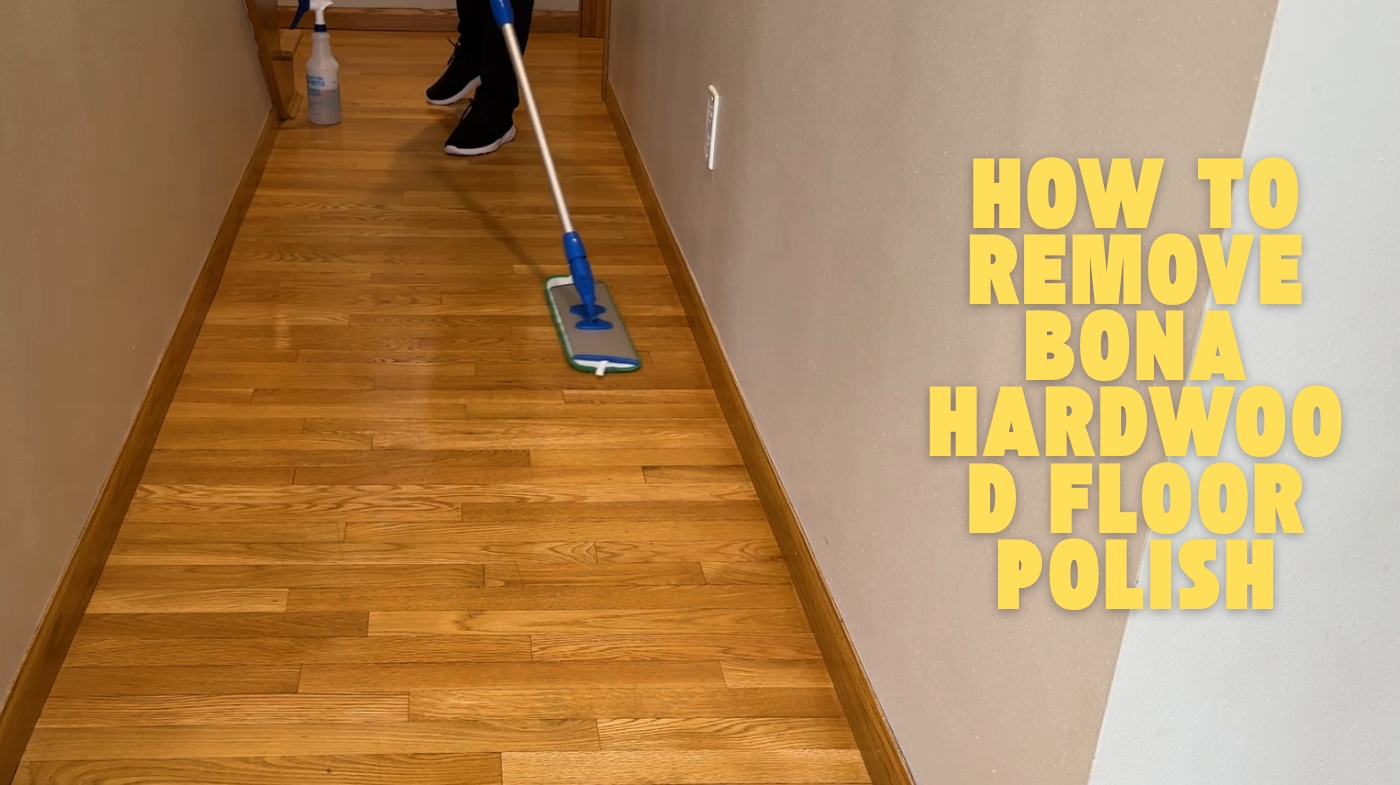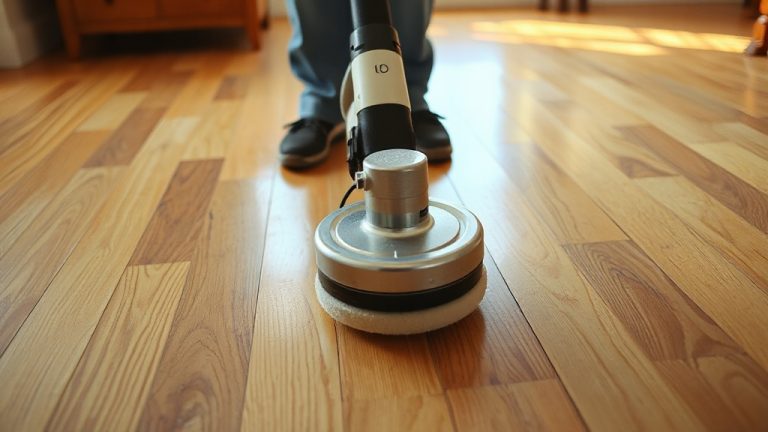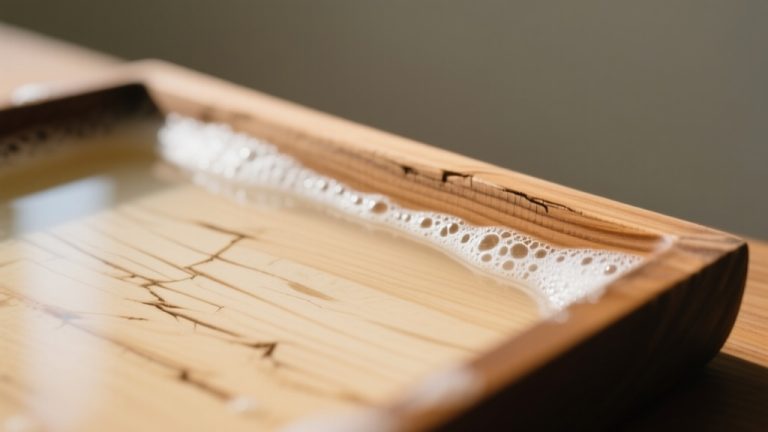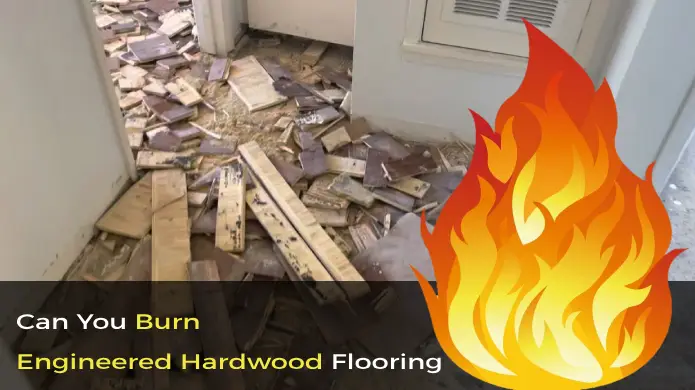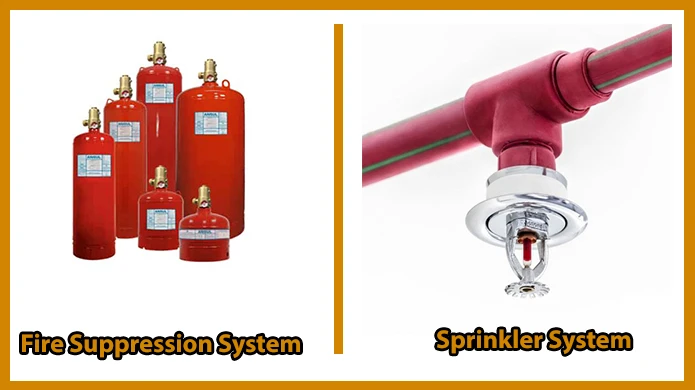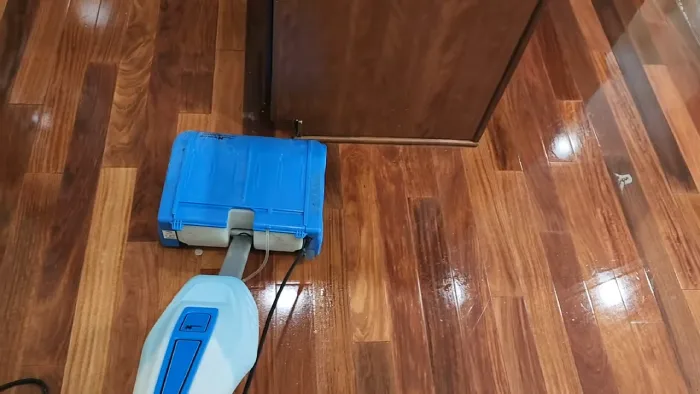How to Remove Bona Hardwood Floor Polish: Prep for Success
To remove Bona hardwood floor polish, start by thoroughly sweeping and applying Bona Remove evenly on 40-60 sq ft sections, allowing it to sit for 5-7 minutes. Use a nylon or brown stripping pad with a buffer moving along the wood grain to agitate the polish gently.
Reapply as needed to keep the area wet. Protect edges with smaller pads and maintain proper ventilation and PPE. For a thorough approach and care tips, you can explore detailed steps and tools.
Key Takeaways
- Thoroughly sweep or vacuum the floor before applying Bona Remove in 40-60 sq ft sections for even polish softening.
- Apply Bona Remove evenly with a Bona roller, allowing 5-7 minutes dwell time and reapplying if the surface dries.
- Use nylon or non-abrasive scrubbing pads, moving along the wood grain to gently agitate and remove polish buildup.
- For edges and corners, scrub with small applicator pads and moderate pressure, protecting baseboards with tape.
- Rinse thoroughly with Bona Deep Clean or clean water, mop residue away, and allow floors to dry completely before recoating.
Preparing and Applying Bona Remove
When you need to remove acrylic-based polish from a polyurethane-finished hardwood floor, Bona Remove provides a chemically precise solution that dissolves multiple polish coats without harming the underlying finish.
Before application, thoroughly dry sweep or vacuum to eliminate dust and grit. Apply Bona Remove evenly over small sections of 40-60 sq ft using a Bona roller, maintaining a coverage rate of 700-800 sq ft per gallon. Allow the product to dwell for 5-7 minutes, reapplying to areas drying prematurely.
It is important to test a small area prior to full application to ensure the desired results and prevent damage. Proper surface preparation helps maintain the durability and appearance of engineered hardwood floors.
Start by dry sweeping, then apply Bona Remove evenly on small sections, allowing 5-7 minutes dwell time.
Avoid flooding floor gaps to prevent damage. After chemical action, wipe up all residues before applying new maintenance coats. For safety, wear gloves and glasses, ensure proper ventilation, and perform a test patch to confirm suitability.
Mechanical Agitation and Scrubbing Techniques
Choose the right scrubbing pad, brown pads on a 175-rpm buffer work best for medium to large areas. Then apply Bona Remove generously to keep the surface wet.
Use mechanical agitation moving with the wood grain, focusing on small sections to avoid streaking and guarantee thorough polish breakdown. Using a soft-bristled brush or appropriate cleaning attachment can help protect the floor finish during agitation.
Don’t forget to manually address edges and corners with hand tools, as machines can’t reach these spots effectively. Perform a small test area before starting the full removal to ensure desired results and avoid damage.
Scrubbing Pad Selection
Although selecting the right scrubbing pad may seem straightforward, it considerably impacts the effectiveness of mechanical agitation during polish removal. Choose nylon pads for gentle yet effective scrubbing without damaging hardwood finishes.
For light polish removal, non-abrasive foam pads minimize scratching risk, while microfiber pads excel at trapping dissolved polish residues. Reserve abrasive pads for heavy buildup but use them cautiously to avoid surface damage. Consider dual-sided combination pads for staged removal.
Match pad hardness to polish buildup and ensure compatibility with your floor finish. Fit pads to your cleaning tool and select appropriate sizes—larger for broad areas, smaller for edges.
Maintain consistent pressure and overlap scrubbing paths by 20–50%. Clean or replace pads frequently to avoid re-depositing polish, and always test pads on inconspicuous spots to prevent damage.
To prevent moisture damage during cleaning, use pads that do not require excessive water and ensure the floor is dried completely after the process to protect the hardwood floor finish.
Agitation Methods
Selecting the right scrubbing pad sets the foundation for effective polish removal, but mastering agitation methods will considerably enhance your results.
Mechanical agitation with a Bona power scrubber or a 175 RPM buffer fitted with a brown scrubbing pad breaks down polish without harming the finish. Maintain consistent, even movement and proper dwell time of 5-7 minutes to maximize polish softening.
Before starting, it is important to test a small area with the cleaning solution to ensure it does not damage the wood. During this process, avoid excessive moisture to prevent wood warping or finish damage.
For manual scrubbing, use a non-abrasive pad with gentle pressure, working in small sections to avoid damage.
- Apply polish remover evenly and allow dwell time before scrubbing
- Move buffers with the wood grain using steady back-and-forth strokes
- Keep pads moist, reapplying remover as needed
- Clean or replace pads frequently to prevent residue buildup
- Work in manageable sections (10-60 sq ft) for control and effectiveness
Edge and Corner Care
When working near edges and corners, mechanical tools often can’t reach effectively, so you’ll need smaller applicator pads or hand tools to apply polish remover precisely without overspreading.
Pre-treat edges, allowing dwell time to soften polish before scrubbing with low-speed buffers or hand brushes. Use brown stripping pads and scrub along the wood grain with moderate pressure to avoid damage. Always remove residue promptly to prevent re-soiling.
It is important to avoid excess moisture during cleaning to protect the hardwood floor’s finish. Make sure floors are fully dried before proceeding with any further treatment to maintain the durability of hardwood floors.
| Tool Type | Application Area | Key Tip |
|---|---|---|
| Small Applicator Pad | Edges | Precise remover application |
| Hand Scrub Brushes | Corners | Circular agitation |
| Low-Speed Buffer | Near edges | Use brown stripping pads |
Managing Multiple Applications and Coverage
To guarantee thorough polish removal across large hardwood floors, you should divide the surface into manageable sections of 40-60 square feet and apply multiple thin layers rather than a single thick coat. This approach prevents premature drying and ensures uniform polish softening.
Move furniture carefully to access all affected areas, especially around registers and beneath pieces, to ensure complete wax removal and floor preparation. Additionally, be sure to use a pH-neutral cleaner to avoid damaging the wood finish during the removal process.
Divide large hardwood floors into 40-60 sq ft sections and apply thin layers for even polish removal.
Monitor each section closely, reapplying remover as needed within the 5-7 minute dwell time to maintain effectiveness. Use separate cleaning tools for each section to avoid cross-contamination of residues.
Waiting the full dwell time before scrubbing maximizes polish breakdown without damaging the floor finish.
- Segment floors into 40-60 sq ft sections for controlled application
- Apply thin, even layers to avoid drying and patchiness
- Reapply remover promptly if drying occurs before dwell time ends
- Use dedicated tools per section to prevent residue spread
- Allow 5-7 minutes dwell time before scrubbing for ideal results
Essential Equipment and Tools for Effective Removal
To remove Bona hardwood floor polish effectively, you’ll need the right mechanical tools like buffers and power scrubbers to agitate and lift the polish layers. Pair these with specialized cleaning pads designed for stripping polish without damaging the wood surface.
Additionally, using squeegees helps manage the slurry and residue for efficient cleanup during the process. Maintaining proper surface preparation before removal ensures better results and prevents damage to the hardwood floor.
Buffers and Scrubbers
Although selecting the right buffer or scrubber might seem straightforward, choosing equipment specifically designed for hardwood floor polish removal guarantees effective results without damaging your floor’s polyurethane finish.
Use power scrubbers with variable speed control and compatible brown stripping pads to evenly spread Bona Polish Remover and agitate softened polish without harming the surface. Smaller handheld buffers reach corners for thorough removal.
Proper maintenance and prompt spill cleanup are vital, as waterproofing alone does not eliminate the need for caution.
- Employ 175 RPM buffers with appropriate pads for controlled polish breakdown
- Use scrubbers compatible with Bona products to avoid finish damage
- Apply polish remover in 40-60 sq. ft. sections for controlled treatment
- Select ergonomic, lightweight tools to reduce operator fatigue
- Always pre-test equipment on inconspicuous areas to ensure safety and efficacy
For optimal results, dilute solution with 1 litre to 5 litres of water before application to ensure effective polish removal and protect the floor. This approach optimizes polish removal while preserving your hardwood floor’s integrity.
Cleaning Pads and Squeegees
Buffers and scrubbers effectively loosen Bona hardwood floor polish, but selecting the right cleaning pads and squeegees guarantees you eliminate residue without damaging the finish. Use Bona-specific scrubby pads or brown scrubbing pads with buffers for efficient polish agitation.
White scrub pads work for manual scrubbing but require rinsing. For rinsing, using a CRB (Counter-Rotating Brush) before applying squeegees improves cleaning effectiveness by loosening polish residues. Note that using tools designed specifically for hardwood can help maintain the floor’s durability and finish quality.
Follow scrubbing with microfiber pads to mop polish slurry and residue. Employ squeegees attached to floor machines to remove excess liquids, minimizing drying time and preventing water damage. Note some squeegees only pull backward, so ensure maneuverability during cleaning.
Swap mop covers frequently to avoid reapplying residue and maintain effective polish remover distribution. Always apply controlled pressure and test in inconspicuous areas to protect the wood finish. This equipment combination ensures thorough, safe, and efficient polish removal.
Precautions to Protect Your Hardwood Floors
When removing Bona hardwood floor polish, you must take specific precautions to protect your floors from physical damage, chemical exposure, and environmental factors. Use soft, non-abrasive tools like microfiber mops to avoid scratching.
Always keep the polish remover moist on the surface to prevent damage from drying. Regular sweeping or vacuuming before application ensures no debris can scratch the floor during the process, supporting scratch prevention.
Applying treatments with care ensures the integrity of the wood’s surface is maintained throughout the process.
Protect your floors by using soft tools and keeping polish remover moist during removal.
Work in a well-ventilated area, wearing gloves and safety glasses to mitigate chemical risks. Control room humidity and temperature to minimize wood movement during application. Remove furniture and cover baseboards to protect surrounding areas.
Proper preparation is essential to achieve the best adhesion and performance of any subsequent treatment, similar to how you would prepare the wood when applying fire retardants.
- Use soft cleaning tools and avoid harsh scrubbing
- Follow Safety Data Sheet instructions and wear PPE
- Maintain controlled humidity and avoid standing water
- Remove furniture and restrict foot traffic in the work zone
- Test polish remover on a small patch before full use
Final Cleaning and Post-Removal Care
Protecting your floors during polish removal sets the stage for effective final cleaning and post-removal care. Use a power scrubber with Bona Deep Clean to thoroughly rinse residue, keeping the floor wet for 5-10 minutes.
Mop with clean water and repeat if residues remain. Allow complete drying; accelerate with fans and check for sticky spots. Lightly abrade if necessary. Inspect under proper lighting to ensure uniform stripping and test a small area for finish compatibility before recoating.
| Step | Action |
|---|---|
| Residue Removal | Power scrub with cleaning agent |
| Drying | Use fans; check for sticky spots |
| Surface Prep | Light abrasion if needed |
| Inspection & Testing | Visual check and test polish adhesion |
Frequently Asked Questions
Can Bona Remove Be Used on Floors Other Than Hardwood?
You can use Bona’s polish remover mainly for hardwood and similar hard surfaces, but you should test it on a small, hidden area first to avoid damage.
It’s formulated specifically for Bona Hardwood Floor Polish, so using it on laminate or stone surfaces mightn’t yield the best results and could harm your floor’s finish. Always follow the instructions and precautions to guarantee safe and effective polish removal.
How Long Should I Wait Before Recoating After Polish Removal?
Oh sure, just slap on that new coat immediately because who needs adhesion, right? In reality, you should wait until the floor feels completely dry and free of tackiness, which usually takes several hours depending on humidity and temperature.
Thoroughly clean all residues, inspect for damage, and lightly abrade if needed before recoating. Patience here prevents peeling, bubbling, and costly rework. Rushing it only ruins your flawless finish.
Is Ventilation Necessary During Bona Remove Application?
Yes, ventilation is essential during Bona Remove application. You should guarantee windows are open or use fans to maintain continuous airflow. This reduces inhalation of strong chemical vapors and prevents respiratory irritation.
Proper ventilation also supports the product’s effectiveness and helps solvents evaporate safely. Avoid using it in confined spaces, and keep the area ventilated throughout the 5-7 minute dwell time and until the floor dries completely.
Can Pets or Children Be on the Floor During Treatment?
You shouldn’t let pets or children on the floor during treatment. The polish remover contains chemicals and creates slippery surfaces, increasing fall and irritation risks.
Keep them out until the floor is fully dry and rinsed. Proper ventilation and barriers are essential to minimize exposure and maintain safety throughout the process.
What Should I Do if Bona Remover Causes Discoloration?
If Bona Remove causes discoloration, stop using it immediately to prevent further damage. Rinse the area with clean water and apply a neutralizing agent if you have one available. Avoid applying more product or moisture.
Document the discoloration for future reference. Contact a flooring professional for assessment and possible refinishing options if the stain persists. Always test removal products in small areas beforehand to reduce risks.
Buff With the Grain: Harnessing Nylon or Brown Pads for Even Agitation
Removing Bona hardwood floor polish requires patience and the right approach. Remember, “measure twice, cut once” applies here; preparing properly and using the correct tools guarantees effective removal without damaging your floors.
Follow each step carefully, from applying the remover to scrubbing and final cleaning. Taking these precautions helps maintain your hardwood’s integrity while restoring its natural beauty. With diligence and attention to detail, you’ll achieve a polished, flawless finish.

